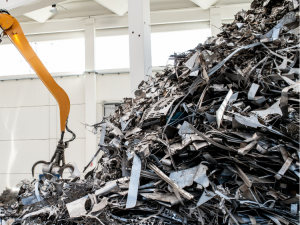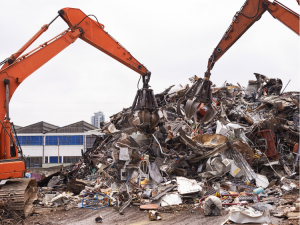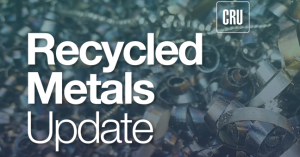Miller on Pig Iron: Brazilian tariffs threaten turmoil in sector
The announcement of 50% tariffs on Brazilian imports, including pig iron, could have a dramatic effect on steelmaking raw materials.
The announcement of 50% tariffs on Brazilian imports, including pig iron, could have a dramatic effect on steelmaking raw materials.

The resistance Brazilian pig iron sellers had shown to accepting lower prices has proved short-lived, sources told SMU.
According to our latest analysis, prices for four of the seven steelmaking raw materials we track declined from May to June. Collectively, these materials declined 3% month over month (m/m) and are down 9% compared to three months ago.

Brazilian pig iron prices fail to rise after ferrous scrap market settle.

The US mills have managed to reduce pig iron prices to correspond with the sharp declines in domestic scrap prices in May.
According to our latest analysis, prices for four of the seven steelmaking raw materials we track increased from April to May. However, select materials saw a collective 1% decline month over month and are down 4% compared to three months ago.

An update on the ferrous scrap market.
Market participants in both the US and Europe noted that most buyers are patiently waiting for prices to reduce as they have enough inventory at hand.
Since the US ferrous scrap settlements for May have been finalized, steelmakers are turning their attention to continued pig iron flows with the wind behind their backs.

For those who don’t know, we have a monthly scrap survey. It’s very similar to our industry-leading flat-rolled steel survey. We cover market trends, pricing, and sentiment – which helps us keep our finger on the pulse of the scrap market. One thing we’ve learned lately from our surveys here at SMU: The lack of […]

Here are highlights of what’s happened and a few things to keep an eye on this upcoming week.
Given the news about tariffs and bringing back industries to the US, a brief look back in time may show how our economy changes with technological advances and the shifting economies of scale.
Can technology help with pig iron and DRI/HBI tariffs?
The pig iron markets have been quiet for the last several weeks, as tariff implementation on imports into the US became a reality. There has been debate on which party will have to pay the tariff. A recent transaction could provide the answer to that question.
The imposition of reciprocal tariffs by President Trump as explained on Wednesday afternoon has rattled virtually every market. This policy has some advantages for the steelmaking sector, but there may be some disadvantages that were not considered, especially for the EAF producers of flat-rolled.
The price of pig iron for the US market remains firm despite a potential drop in domestic ferrous scrap prices going into April.
Prices for five of the seven steelmaking raw materials tracked by SMU increased from February to March, according to our latest analysis.

“The next months are going to be good ones for pig iron producers," according to one source.
Prices for six of the seven steelmaking raw materials SMU tracks are increased from January to February, according to our latest analysis.
SMU's Stephen Miller provides an update on the raw materials sector.

There has been considerable upward movement in the US prices paid for future shipment of Brazilian-produced pig iron over the last week.

A comparison of the current cost of pig iron vs. busheling scrap.
Prices for the seven steelmaking raw materials SMU tracks moved in differing directions from December to January, according to our latest analysis.

There is no doubt pig iron will be needed to fuel the expansion of flat-roll capacity in the US and Canada. Where will it come from? How much will it cost? What will be the quality? Is it a good business to produce merchant pig iron? The US imports between 4-6 million metric tons (mt) per year of […]
Pig iron prices declined in all regions as the EU’s 2025 import quota on Russian pig iron has begun, loosening global supply.

Prices for pig iron imports into the US continue to retreat in the face of regional weakness in demand for ferrous raw materials in South Asia and the Far East.

The prices being paid by US-based buyers has continued to decline as ferrous raw material demand across the globe remains weak.
Prices were stable to down in November for all seven steelmaking raw materials tracked by SMU, according to our latest analysis.

The pig iron markets have retreated over the last two months amidst a concerted effort by US-based buyers to drive down prices to more closely follow the lower domestic scrap prices.

SMU is pleased to share the latest news from the global pig iron markets from our sister publication, Recycled Metals Update.